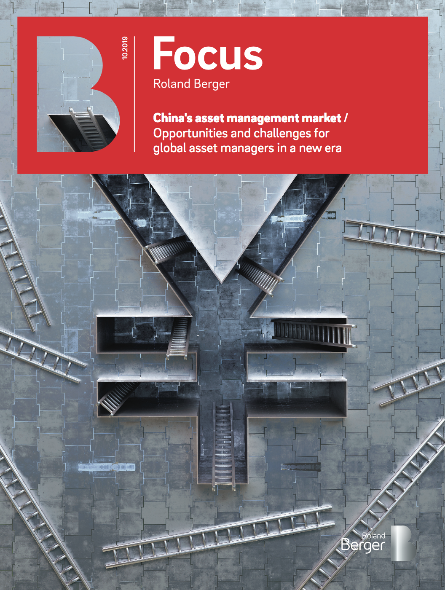Asset management: China is liberalizing its financial services
![{[downloads[language].preview]}](https://www.rolandberger.com/publications/publication_image/Roland_Berger_STU_-547_ChinaAssetManagement_Cover_download_preview.png)
The ongoing liberalization of the Chinese asset management market holds considerable potential for those willing to reassess their strategy.


Only 6 percent of global assets under management originates from China while almost half comes from North America (47 percent). However, the Chinese asset management market has grown faster than the global market in recent years. Thanks to the ongoing liberalization of financial services and the recent regulatory changes in this sector, access to the asset management market is improving significantly for foreign players. Now is the right time for foreign asset managers to reassess their strategic options in China.
Today, supported by solid socio-demographic fundamentals, China's asset management market growth is strong and its size is expected to triple over the next 10 years offering attractive opportunities for foreign asset managers. This is one of several key findings of Roland Berger's study "China's asset management market – Opportunities and challenges for global asset managers in a new era".
In this context, China has not only granted foreigners full access to the market for private funds but has also raised the upper limit for foreign participation in Sino-foreign fund management joint ventures from 49 to 51 percent. Furthermore, the government recently promised to lift all ownership restrictions by 2020. This will give foreign companies the opportunity to emerge as actual onshore operators instead of mere shareholders. And this is just one of many other recent liberalization measures.
Although it seems easier now for foreign players to operate in the Chinese asset management market, difficulties remain when you look more closely. It is thus crucial for foreign players to be deeply familiar with the market and the specific options they can consider to benefit from the market's current and future potential. The review process will involve clarifying their long-term ambitions and carefully assessing the different available strategies.
Roland Berger's study provides some possible directions by elaborating on the current strategies of some major foreign players to help understand how they have thought through the optimal setup to go after this important market.

![{[downloads[language].preview]}](https://www.rolandberger.com/publications/publication_image/Roland_Berger_STU_-547_ChinaAssetManagement_Cover_download_preview.png)
The ongoing liberalization of the Chinese asset management market holds considerable potential for those willing to reassess their strategy.
